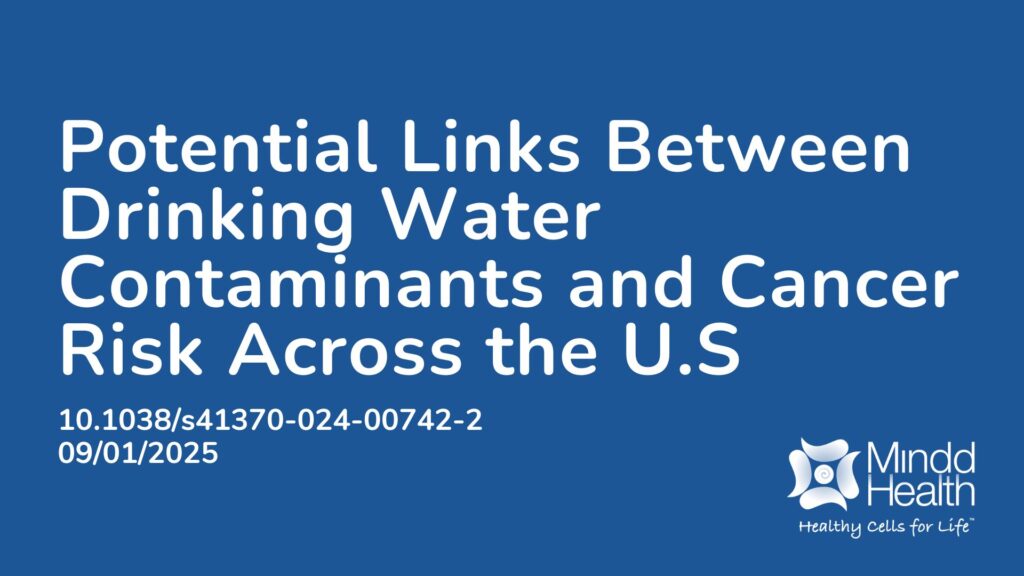Summary:
Exposure to PFAS, a group of chemicals found in drinking water, has been linked to various cancers. This study aimed to examine cancer rates between 2016 and 2021 and explore how they are related to PFAS contamination in drinking water across the U.S. Researchers gathered data on cancer cases from 2016 to 2021 and information about PFAS levels in public drinking water. The study focused on two rounds of PFAS testing, looking at several types of PFAS chemicals. The researchers then analyzed the connections between PFAS levels and cancer rates. They also estimated how many cancer cases might be linked to PFAS exposure. The results showed that PFAS in drinking water was linked to higher cancer rates in the digestive system, endocrine system, oral cavity, and respiratory system. The strongest link was between one type of PFAS, PFBS, and cancers of the oral cavity. Among men, PFAS was connected to cancers in the urinary system, brain, blood, and soft tissues, while in women, it was linked to cancers of the thyroid, oral cavity, and soft tissue. The study estimated that PFAS exposure in drinking water may contribute to thousands of new cancer cases each year. This research highlights the connection between PFAS in drinking water and several types of cancer, some of which have not been widely studied in relation to these chemicals. It also revealed differences between men and women in how PFAS affects cancer risk. This study is the first to explore the relationship between PFAS in drinking water and various types of cancer in such detail.
Abstract:
Background: Exposure to per- and polyfluoroalkyl substances (PFAS) has been linked with various cancers. Assessment of PFAS in drinking water and cancers can help inform biomonitoring and prevention efforts. Objective: To screen for incident cancer (2016–2021) and assess associations with PFAS contamination in drinking water in the US. Methods: We obtained county-level age-adjusted cancer incidence (2016–2021) from the Surveillance, Epidemiology, and End Results (SEER) Program. Data on PFAS levels in public drinking water systems were obtained from the Third (UCMR3; 2013–2015) and Fifth (UCMR5; 2023–2024) Unregulated Contaminant Monitoring Rule. UCMR3 measured PFOS, PFOA, PFNA, PFHxS, PFHpA, and PFBS. UCMR5 expanded measurements to include PFBA, PFHxA, PFPeA, and PFPeS. We created indicators of PFAS detection and, for UCMR5, concentrations above Maximum Contaminant Levels (MCLs). MCLs for PFOA and PFOS are 4 ng/L, and for PFNA and PFHxS are 10 ng/L. We used Poisson regression models to assess associations between PFAS detection or MCL violation and cancer incidence, adjusting for potential confounders. We estimated the number of attributable cancer cases. Results: PFAS in drinking water was associated with increased cancer incidence in the digestive, endocrine, oral cavity/pharynx, and respiratory systems. Incidence rate ratios (IRRs) ranged from 1.02 to 1.33. The strongest association was observed between PFBS and oral cavity/pharynx cancers (IRR: 1.33 [1.04, 1.71]). Among males, PFAS was associated with cancers in the urinary, brain, leukemia, and soft tissues. Among females, PFAS was associated with cancers in the thyroid, oral cavity/pharynx, and soft tissue. PFAS in drinking water is estimated to contribute to 4626 [95% CI: 1,377, 8046] incident cancer cases per year based on UCMR3 data and 6864 [95% CI: 991, 12,804] based on UCMR5. Impact statement: The ecological study examined the associations between PFAS in drinking water measured in two waves (2013–2015 and 2023–2024) and cancer incidence between 2016 and 2021. We found that PFAS in drinking water was associated with cancers in the organ system including the oral cavity/pharynx, lung, digestive system, brain, urinary system, soft tissue, and thyroid. Some cancers have not been widely studied for their associations with PFAS. We also observed sex differences in the associations between PFAS and cancer risks. This is the first ecological study that examined PFAS exposure in drinking water and various cancer risks.
Article Publication Date: 09/01/2025
DOI: 10.1038/s41370-024-00742-2






